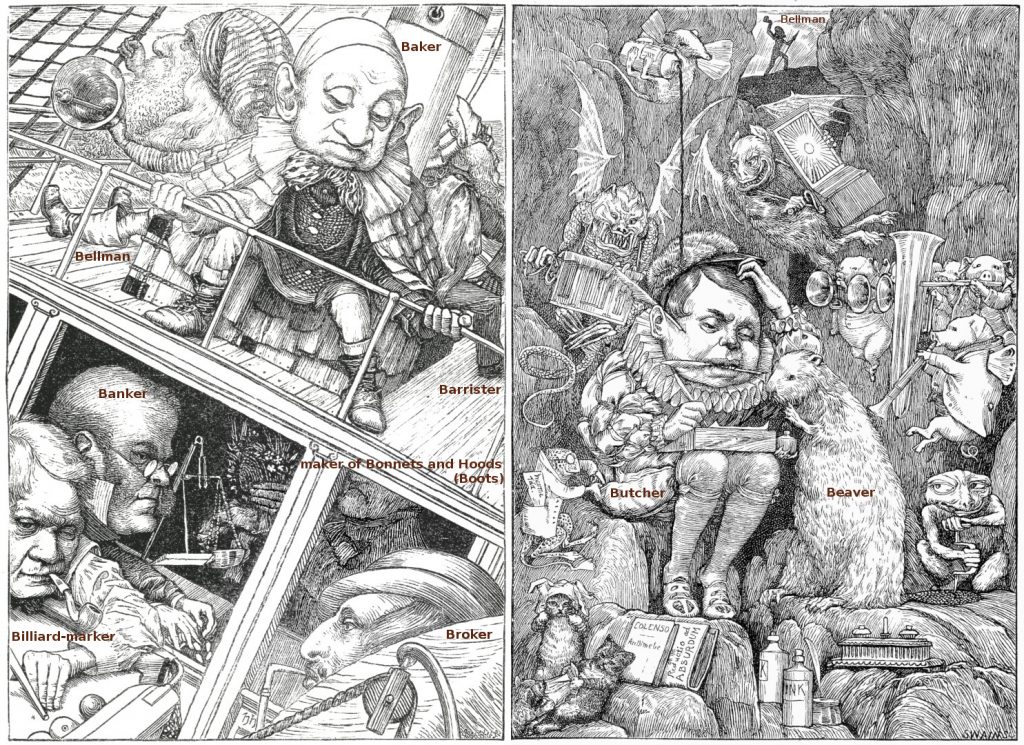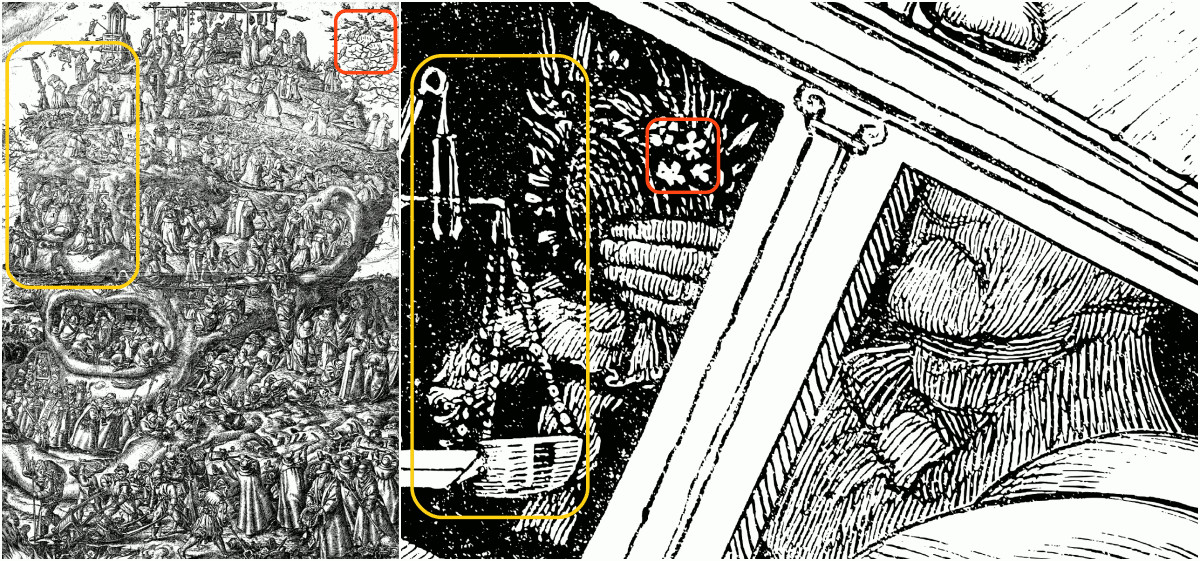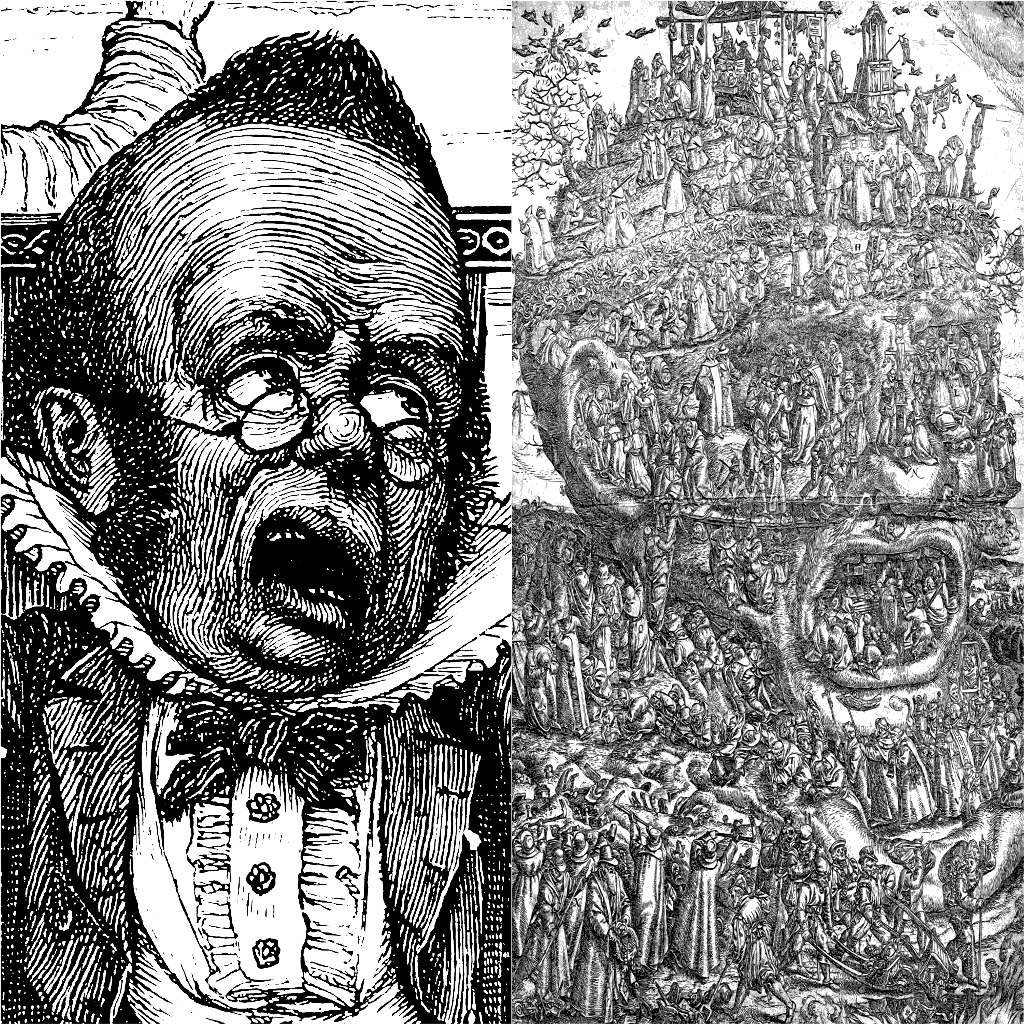
The Snark hunters.

- [left]: Mirror view of The Image Breakers (1566-1568) by Marcus Gheeraerts the Elder. (I could have drawn a second yellow box. What do you think?)
- [right]: Henry Holiday’s depiction of a bonnet (the hat, not the sail) and the maker of Bonnets and Hoods in Lewis Carroll’s The Hunting of the Snark (1876)
Why do artists hide images in images and why do some people think that artists hide images in images? As a beholder of images with presumably “hidden” elements, you might want to be cautious before seeing images in images. You might be diagnosed with pareidolia and with going to far with your search for meaning. As for Henry Holiday, I think that there are several other reasons why he could have hidden images in images:
- Plagiarism: Possible, but very improbable in case of Henry Holiday’s Snark illustrations. He didn’t borrow shapes and pattern from other works of art in order to improve his own work. In contrary, in almost all cases the copied shapes don’t add anything to the impact of his illustration. Holiday did not copy whole compositions.
- Ambiguity: You want to tell something to the audience. But you want to make sure that the audience will be hold responsible for how your message is perceived and interpreted.
- Anxiety of influence: On way for an artist to overcome that anxiety (if there is any) is to take control of influence. You allow it, you even may embrace it, but you re-interpret and rearrange what is influencing your work.
- Play: Why are there puzzles anyway? A possible answer is that in many cases it’s just about having fun. Hiding things in images is fun to creators of puzzles (ask Mahendra Singh) and their audience. Of course its also fun to naughty artists.
Literature on playing with hidden images: Jarrell D. Wright’s dissertation (2015) Dancing before the Lord. Then there is James Elkins’ Why Are Our Pictures Puzzles?: On the Modern Origins of Pictorial Complexity (1999). I wonder why a book with “Puzzles” in the title does not mention fun as a simple reason for puzzles in images. But read the chapter about cryptomorphs. - …
I am not sure about the comparison shown above,
at least not as sure as about the image shown below:
2017-09-27, update: 2020-03-05
